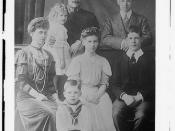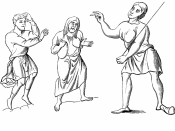Tradition, travel, trade and hazardous for the itinerant merchants are the key elements to be discussed on this document. The journeys for the merchants are beneficial, and full of rewards after a good trade in the market. Today, our society has a great deal of usage of the methods used by those whom are part of the beginning of the emergence of the market society. This document will be focused, and primarily, to the benefits provide by these medieval merchants, and issues encountered, follow by the advantages of their trade as a legacy for the beginning of capitalism.
From the beginning of the Middle Ages to about the year one thousand, commerce was scarce in Western Europe. There were two reasons for this. First, the economy of the medieval manor was generally self-sufficient. Thus, there was a usually little need--as well as little money available--to purchase or barter goods and services from outside sources.
Second, there could meet with local entrepreneurs to purchase and exchange goods (Bruno Leone, 2002, p. 198).
Who are those that purchase and exchange goods in such of this difficult economic times? The answer is Itinerant Merchants. They are a "small irregular procession of armed men, jogging alone one of the rudimentary roads of medieval Europe"; they were carrying "bows" and "swords", and definitively a caravan of horses and mules laden with casks and bales, bags and packs (Robert L. HeilBroner, 2002, p. 36). Merchants set up businesses in the towns that began to grow in the later middle Ages. The most commonly traded items were salt, iron, and textiles. There were also rarer items, such as silk and spices, that came from the trade with China and the Middle East. As trade grew, a new class of highly skilled crafts- people developed.

![King [Haakon] and Queen [Maud] of Norway and [Crown] Prince Olaf (LOC)](https://s.writework.com/uploads/11/119823/king-haakon-and-queen-maud-norway-and-crown-prince-olaf-loc-thumb.jpg)
